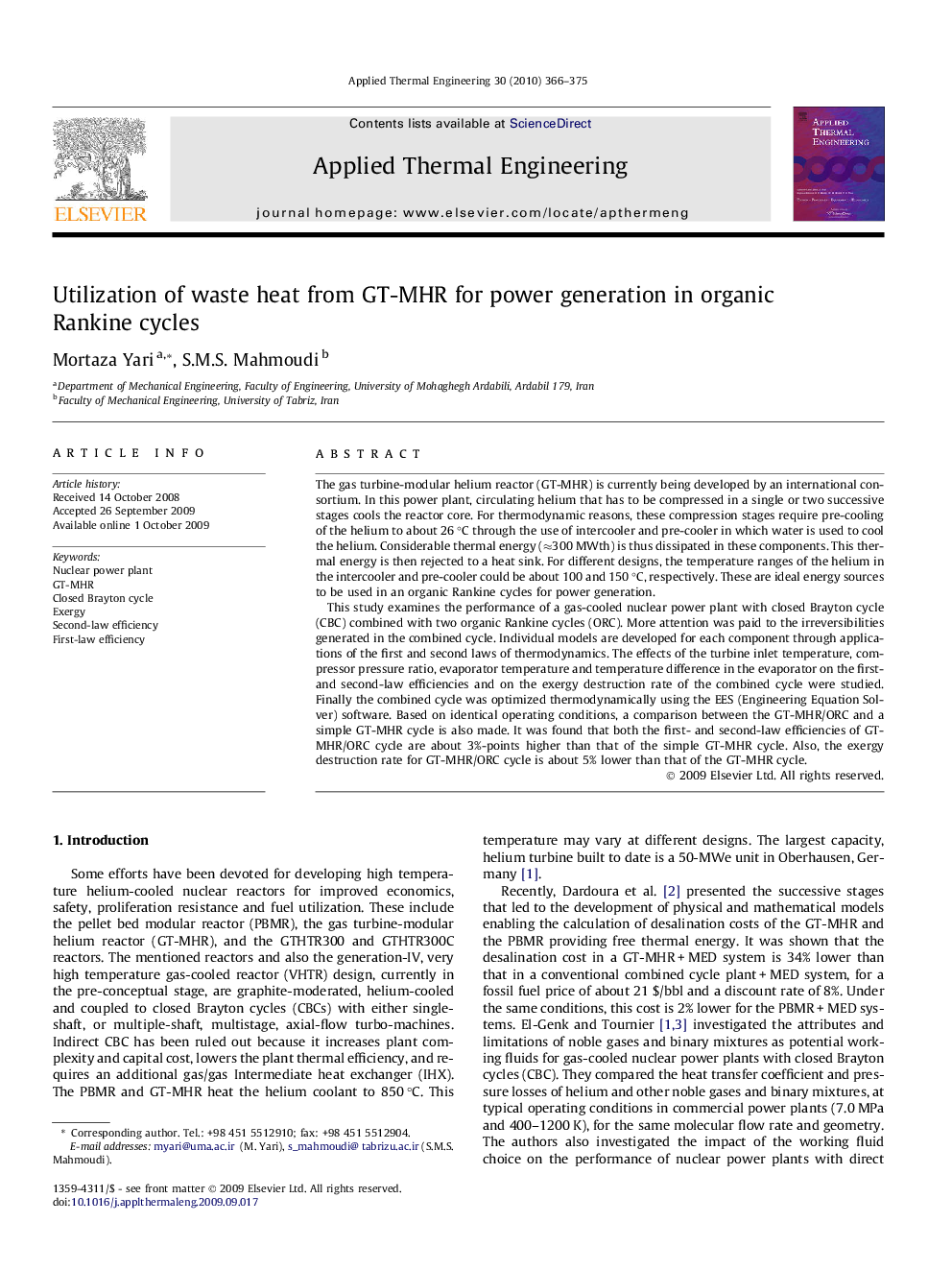| کد مقاله | کد نشریه | سال انتشار | مقاله انگلیسی | نسخه تمام متن |
|---|---|---|---|---|
| 648596 | 884627 | 2010 | 10 صفحه PDF | دانلود رایگان |

The gas turbine-modular helium reactor (GT-MHR) is currently being developed by an international consortium. In this power plant, circulating helium that has to be compressed in a single or two successive stages cools the reactor core. For thermodynamic reasons, these compression stages require pre-cooling of the helium to about 26 °C through the use of intercooler and pre-cooler in which water is used to cool the helium. Considerable thermal energy (≈300 MWth) is thus dissipated in these components. This thermal energy is then rejected to a heat sink. For different designs, the temperature ranges of the helium in the intercooler and pre-cooler could be about 100 and 150 °C, respectively. These are ideal energy sources to be used in an organic Rankine cycles for power generation.This study examines the performance of a gas-cooled nuclear power plant with closed Brayton cycle (CBC) combined with two organic Rankine cycles (ORC). More attention was paid to the irreversibilities generated in the combined cycle. Individual models are developed for each component through applications of the first and second laws of thermodynamics. The effects of the turbine inlet temperature, compressor pressure ratio, evaporator temperature and temperature difference in the evaporator on the first- and second-law efficiencies and on the exergy destruction rate of the combined cycle were studied. Finally the combined cycle was optimized thermodynamically using the EES (Engineering Equation Solver) software. Based on identical operating conditions, a comparison between the GT-MHR/ORC and a simple GT-MHR cycle is also made. It was found that both the first- and second-law efficiencies of GT-MHR/ORC cycle are about 3%-points higher than that of the simple GT-MHR cycle. Also, the exergy destruction rate for GT-MHR/ORC cycle is about 5% lower than that of the GT-MHR cycle.
Journal: Applied Thermal Engineering - Volume 30, Issue 4, March 2010, Pages 366–375